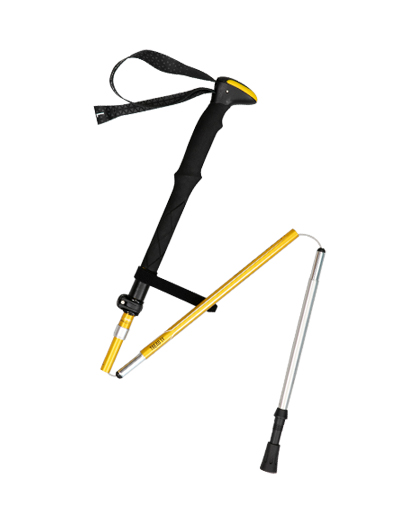

The folding trekking poles are very similar to telescoping poles as what they provide in portable portability, but instead they fold up instead of collapse. They are usually attached to a light aluminum pole through a small metal clip that run through the entire length of the pole, rather than being directly attached like the latter. A spring clip makes the pole fold down, and after this the lightweight pole can be detached from its housing and held securely by a thin piece of hardware. Then the two or more separate sections can be separated form each other again. Because of this feature, they are very much preferable to use when hiking on rough terrain.
These trekking poles are usually made out of nylon or a similar material and are available in two different lengths. In terms of the actual poles themselves, many of them are actually made up of polyester mixed with an epoxy resin. This resin is extremely hard wearing, and it makes sure that the individual strands of the lightweight pole will not rub against each other when they are in motion. The actual material used for making the telescopic poles has become increasingly lightweight over time, and some models can weigh less than five grams.
It is easy to tell the difference between the two types of trekking poles by looking at the housing that they come in. On the other hand, the foldable ones usually have a much larger housing made out of nylon, which provides additional protection. However, the foldable trekking pole has one big advantage over the fixed-length ones - you can bring it apart in order to attach the individual strands. You also get a much lighter piece of equipment.

Of course, this brings us to the next point - where do you think the folding trekking pole actually goes? Well, the answer is simple: through your legs! As you take one end of the trekking pole through your leg, you are effectively 'stowing' it there. This means that you don't need to be carrying any extra weight on your back, or even worrying about the fact that you might have to hold it up by the base of your tarp. Since the pole itself is lightweight, this process of folding just involves a little more work.
Of course, all of this comes at a cost of course. Because the trekking pole itself is so light, the manufacturers recommend that you only carry two strands of it at a time. And that's not easy when you are walking for an extended period of time. Also, because the trekking pole itself doesn't have any webbing on its legs, it can get quite cold when you are carrying it - especially if you are going in the dark.
However, the benefits of these poles should more than make up for the few downsides that they come with. For instance, you will never have to worry about them getting tangled in any foliage or twigs on your hike. Since they don't hang down from your legs, you won't have to worry about catching them on rocks or tree branches - no matter how strong those branches might be. Finally, compared to traditional trekking poles, these trekking poles weigh about half a pound, which is very light.